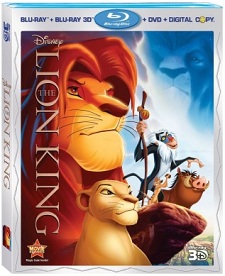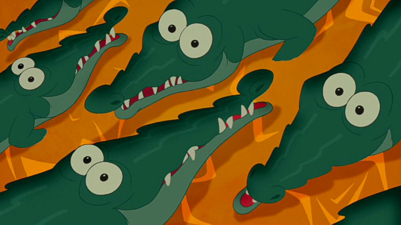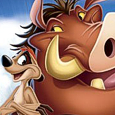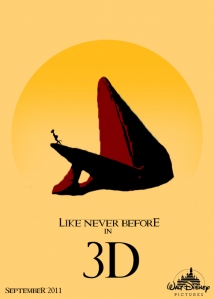 As The Lion King had just made roaring debuts on screens in 3D, and anticipating on its release on video, Animated Views was prililedged to be invited by Disney to attend a virtual roundtable with no less than the directors of the movie themselves, Roger Allers and Rob Minkoff!
As The Lion King had just made roaring debuts on screens in 3D, and anticipating on its release on video, Animated Views was prililedged to be invited by Disney to attend a virtual roundtable with no less than the directors of the movie themselves, Roger Allers and Rob Minkoff!
Roger Allers made his feature film directing debut with The Lion King following a prolific two-decade career in the medium that included everything from character design and animation to story supervision. He was instrumental in shaping the structure and dialogue for the six Disney animated features previous to The Lion King, serving as head of story on Oliver & Company and Beauty and the Beast and contributing to The Little Mermaid, The Prince and the Pauper, The Rescuers Down Under and Aladdin in a senior story capacity.
Born in New York and raised mainly in Scottsdale, Arizona, Allers became hooked on animation when he saw Disney’s Peter Pan at the impressionable age of five. After receiving his degree in fine arts at Arizona State University, he spent two years traveling and living in Europe. In 1973, Allers moved to Boston where he began working with Lisberger Studios, animating and designing for children’s educational programs and commercials. Relocating with the studio to Los Angeles, Allers provided story work, character design and animation for the feature Animalympics and story development for the first film to feature computer generated animation, TRON.
In 1980, Allers lived in Toronto, Canada, working as an animator on Nelvana Studio’s futuristic feature, Rock and Rule, followed by two years in Tokyo, Japan at Tokyo Movie Shinsha doing story development and preliminary animation for Little Nemo. After a period of travel through Indonesia and Asia with his wife and children, Allers returned to Los Angeles in 1985, to begin his work for Disney. Allers has lent his story expertise to such films as The Emperor’s New Groove and Lilo and Stitch. As co-writers, he and Irene Mecchi were nominated for a Tony Award for the book for the Broadway stage version of The Lion King. For Sony Pictures Animation, Roger Allers directed the feature Open Season and for Disney, an animated short based on Hans Christian Andersen’s The Little Match Girl set to the music of Alexander Borodin, which was nominated for an Academy Award for Best Short Animated Film.
Currently, Roger Allers is writing an original musical for the stage and recently wrote and directed a performance piece for Heifer International, a charity devoted to alleviating world hunger and poverty.
Rob Minkoff’s career as a filmmaker is uniquely eclectic, including the animated masterpiece The Lion King, the blockbuster action picture The Forbidden Kingdom, starring Jackie Chan and Jet Li, and the recent Sundance Film Festival event Flypaper, starring Patrick Dempsey, Tim Blake Nelson and Ashley Judd.
Rob began his directorial career at Disney with two Roger Rabbit shorts, Tummy Trouble and Rollercoaster Rabbit. After a twelve year career at Disney, Rob left to direct the combination live-action/animation Stuart Little and Stuart Little 2 for Sony’s Columbia Pictures. In addition to supervising the creation of The Lion King and Stuart Little, he’s worked with an incredible array of award-winning talent, including Steven Spielberg, Robert Zemeckis, Hugh Laurie, Eddie Murphy and Michael J. Fox.
Rob is one of only a few filmmakers to have directed both live action and animated features and innovated the use of the combined mediums with the photo-realistic CGI for Stuart Little and Stuart Little 2. His work has been exemplified by both commercial success and artistic innovation, his films having grossed more than one and a half billion dollars worldwide.
Having traveled to China initially in 1997, Rob has continued to develop a deep interest in Asian history and culture. He is currently developing several China-related projects, including the upcoming action fantasy Chinese Odyssey. He owns a home in Beijing and recently married the 76th generational descendant of Confucius.

Roundtable Interviewer: What was the idea that brought to life The Lion King?
Rob Minkoff: Originally it was thought of as a Bambi in Africa. More true life adventure than mythical epic. But when Roger and I finally got together on it we imbued it with the more spiritual elements that are a hallmark of the film.
RI: When you were doing The Lion King, could you ever imagined that it would have become such a classic Disney film?
RM: When we started working on The Lion King we were fourth in a succession of modern Disney animated classics. First it was Little Mermaid, then Beauty & The Beast, and finally Aladdin. They were all tough acts to follow. We only hoped we would be compared favorably and not disappoint the Disney fans that had been growing with each new hit. It wasn’t until we finished Circle of Life and put it into theaters as a trailer that we knew we had something special. But we were never overly confident. So we continued to work hard to deliver a good movie.
RI: Rob, how did you share director’s duties with Roger Allers?
RM: After working on the story together, we divided up the sequences so that each one had either Roger or me leading the way. For example: Roger did I Just Can’t Wait To Be King and I did Circle of Life.
RI: Can you talk a bit about how you went about recruiting animators to come work on The Lion King? I’ve always heard that — because Pocahontas was supposed to be this prestige project — most of the Studio’s A-list animators gravitated to that production, which then supposedly made it kind of tough to initially recruit animators to come work on The Lion King, which at that time was still having some pretty significant story problems. Is that story true?
Roger Allers: True, indeed. But this was a chance to give some really deserving young animators their chance to lead a character. Tony Bancroft (Pumbaa), Mike Surrey (Timon), James Baxter (Rafiki) are all brilliant guys – we lucked out!
RM: Lion King was originally called King of the Jungle and was not well regarded around the studio. So when Jeffery Katzenberg announced that the studio would be split in two to make two films simultaneously, many of the top animators wanted to work on Pocahontas instead of The Lion King. Jefferey had deemed Pocahontas the “home run” and Lion King the “risk”. That gave a lot of newer animators a chance to step up to leadership roles.
RI: Many people have noticed similarities to Hamlet in the story of The Lion King. Was that something you were conscious of when making the movie?
RM: Because The Lion King was considered an original story there was always the need to anchor it with something familiar. When we first pitched the revised outline of the movie to Michael Eisner, Jeffrey Katzenberg, Peter Schneider and Tom Schumacher, someone in the room announced that Hamlet was similar in its themes and relationships. Everyone responded favorably to the idea that we were doing something Shakespearean and so we continued to look for ways to model our film on that all time classic. Shakespeare is the greatest dramatist in history. His works have stood the test of time like no other. But it takes time to learn to appreciate Shakespeare and I was fortunate enough to grow up in Palo Alto California, in a time and place where arts education was supported.
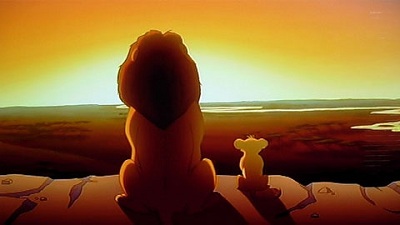
RI: How closely did you work with the voice cast, and how essential are the right voices to an animated film’s success?
RM: As director we work very closely with the actors to create their performance. Typically there will only be one actor recording at a time. This can make it challenging for the actors who are working in a vacuum. Sometimes we have some reading lines with them. Other times I will read with the actor which I find is an excellent way of getting the performance you’re after.
RI: Can you talk about how you guys struggled to get a handle of Rafiki? Robert Guillaume tells these great stories about he kept being called back in to re-record scenes that he’d already recorded dialogue for because you kept changing your approach / your take on the character. Evidently you folks finally brought him back in and said ” We finally figured out who Rafiki is. He’s insane.” Is there any truth to that story?
RM: I remember the big break through came when I asked Robert to laugh. His laugh was so amazing and really brought out the character of Rafiki as a crazy shaman witch-doctor. We kept asking him to laugh before every line!
RI: Could you please share with us some memories of working with James Earl Jones?
RA: Ha ha! The very first time we had James in to record, before doing his first lines he proceeded to clear his throat. The strength and resonance of his “harrrunfs” practically blew us off our chairs in the recording booth! That man IS a lion!
RM: James Earl Jones has one of the most incredible voices in the history of film. Perhaps Orson Welles is his only real rival in that regard. Getting to work with him, especially being such a big fan of Star Wars, was an amazing experience. Watching him warming up his voice before a session was remarkable. He would run through a bunch of vocal exercises and sometimes sounded like a real lion with a rumbling growl.
RI: And what about Jeremy Irons?
RA: Jeremy is a gentleman and a brilliant actor. He always gave us extra interpretations of lines which were fantastic.
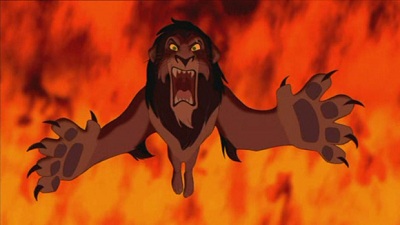
RI: Can you please talk about the contributions of Elton John, Tim Rice, and Hans Zimmer?
RM: It was Tim who suggested Elton for the job. Me, Don and Roger wanted Hans based on his work in The Power of One whose score also featured Lebo M. Their collaboration on the score and musical elements really brought the story to life and gave it its enduring power.
RA: Elton and Tim’s songs help tell the story with humor and heart while Hans’ brilliant score and arrangements (along with Lebo M’s choral work) gave it its scale, drama, and placed it in Africa. Mark Mancina’s arrangements of I Just Can’t Wait to Be King and Hakuna Matata gave the film its moments of playfulness.
RI: Hans Zimmer was more used to scoring live action movies. How did you get along with him in that regard?
RM: Hans really brought the movie to life via the music. It was his ability to combine authentic African flavor that really made the film come to life musically. Mark Mancina was working for Hans at the time and also contributed greatly to the feeling of the movie. He also was musical director and composer for the stage production. As for his experience as a live-action composer, I think there is very little difference in how a composer works on animation and live-action. Although typically an animated score is more closely married to the images. It was a terrific collaboration.
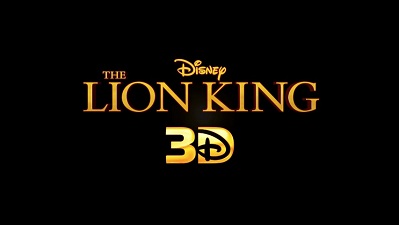
RI: How involved were you in the actual 3D transfer of The Lion King?
RM: Don Hahn, Roger and I came in to meet with Robert Neuman and his team to launch them on the conversion. We watched the picture in 2D and conveyed our thoughts on things we’d like to see (and not see) in our 3D version. And then we met regularly to check the work in progress.
RA: Rob Minkoff, myself and Don Hahn watched the 2D version to determine which scenes could be pushed in 3D to enhance the storytelling and emotional content. Throughout the process, we then reviewed each scene to offer input to Robert Neuman, the 3D stereographer and his crew. I also oversaw the color correction of the final version.
RI: Do you think 3D adds something to The Lion King or is only fashionable now?
RA: Sure. I think it adds a more visceral experience to the film. It’s been fun to see how “3-Dimensionally” we’d been thinking when we orginally made it in 2D.
RM: I must confess that I am a fan of 3D when it’s done properly. Avatar was amazing on screen. There have been a number of films released in 3D which haven’t really delivered on its potential. But I think The Lion King 3D does. It adds a dimension to the world of our characters that makes the experience of the film more immersive. And it doesn’t take anything away from the 2D version either. So The Lion King 3D was a worthwhile endeavor in my opinion.
RI: What the process you went through to determine which story elements would most benefit from the stereoscopic 3D enhancement?
RA: We screened the movie without sound watching for the scenes of greatest potential and called them out to someone who was furiously taking notes!
RI: Were you surprised that hand-drawn animation worked in 3D?
RM: I had seen some attempts at traditional animation rendered in 3D and saw great possibilities in it. But I think Robert Neuman and his team went beyond my expectations and delivered a really compelling presentation.
RI: Which is your favorite 3D-scene?
RM: I think for me, the Circle of Life works amazing well. And is a great way to open the experience of watching the film. It always had a power and impact but now really jumps off the screen.
RA: I’d have to say in that Circle of Life sequence where Zazu is flying up to join Mufasa on the promontory of Pride Rock. Great sense of flying and space!
RI: Now, with The Lion King 3D, The Morning Report is no more part of the Lion King feature. Can you tell us why?
RA: It was only included for the IMAX and first DVD release as a fun bonus feature. The song Morning Report was originally written for the stage musical. We wanted this current version to be true to the original release.

RI: How surprised were you when you saw the US box office figures last weekend?
RM: I couldn’t believe it! I originally heard they were estimating something in the range of $12 million. When it topped thirty I was shocked and amazed but also very pleased. It’s nice that audiences still love the movie!
RI: What about The Lion King do you feel makes it a classic?
RA: It’s the balance of humor and drama and the resonance of its themes. The issues of life and death, and loss. The responsibilities of leadership and finding one’s place in life.
RM: I think it’s a combination of classic coming of age story with an incredible musical score by by Elton John, one of pop music’s most prolific and successful composers. Plus, the overall design of the production and look of the characters make The Lion King feel like a traditional Disney Classic.
RI: When you`re working on a movie, what is most important to you?
RM: Story is the most important thing! But beyond that, the creative process and the excitement of working with top notch artistic collaborators makes working as a director a very satisfying endeavor.
RA: What’s most important to me is having an environment of mutually respectful, creative energy with my co-creators/artists.
RI: Rob, you went from animation to live action/animation with the Stuart Little films, and live action with Haunted Mansion. What are the differences between directing animation and directing live action, and in directing animators (actors with a pencil) and live actors?
RM: Hugh Laurie once asked me if I wanted to erase his eyebrows and sketch in something else. There is a mistaken notion that directing animators is easier than live actors. It isn’t. Animators are just as difficult. Especially the really good ones.
RI: What is your opinion about the Broadway musical version of The Lion King directed by Julie Taymor?
RM: When I first heard that a musical was being contemplated for The Lion King I was concerned it would attempt to be too literal. Beauty And The Beast had already made the leap to the stage and it was very much a replica of the animated movie. I didn’t think that kind of approach would work for The Lion King. When Julie Taymor was brought on board to re-imagine the musical for the stage it was put into the right hands. Her approach to re-conceptualize the show, utilizing her brilliant sense of stagecraft brought out its theatricality and made it a unique experience. When I saw the show for the first time I was delighted and gratified that our movie would live on on stage. And it hasn’t disappointed having been running since 1997.

RI: Rob, do you have any plans to return to animation?
RM: I am actually working on a new animated movie right now. It’s based on the classic characters Mr. Peabody & Sherman who originally appeared on the Rocky & Bullwinkle show. We have Robert Downey Jr. on board playing the genius dog who adopts a red-headed human boy.
RI: Roger, there’s a plan for Elton John’s biopic. Would you consider directing it, maybe?
RA: Sure, an animated version of his life story? I’m on it!
RI: How do you see the future of animation?
RM: When I got started back in the early 80s it seemed that animation was on its way out. But today there are more animated features, TV shows, commercials, and animated content of all kinds being produced. So I’m very bullish on animation. I think, eventually, more films will be made with more diverse content to reach audiences of all ages, and that animation finally achieves a level of respect that equals any other kind of filmmaking.
RA: I think the field will continue to open up in terms of technique and subject matter. The line between animated and live action has already become so blurred, the entire distinction may disappear.
RI: What do you prefer: classic 2D or computer animation?
RM: I think computer animation has vastly improved over the years and has achieved a similar quality to traditionally hand drawn animation. That said, nothing can replace the look and feel of human drawings. So I think there is room in the world for both, each with its own unique strengths and weaknesses.
RI: Rob and Roger, any final thoughts on The Lion King as we close out this virtual roundtable?
RM: After 17 years it’s been an amazing journey on The Lion King. One that I hope continues on, like the Circle of Life. Thanks for joining us in this virtual round table. Looking forward to the next time we all meet virtually or otherwise!
RA: I’m so happy that audiences are able to experience The Lion King in a theatre on a big screen with other viewers. It’s the communal experience, you know? Let’s gather at Pride Rock, join the circle, and tell our tales.
Our thanks to Roger Allers, Rob Minkoff and Dre Birskovich!



